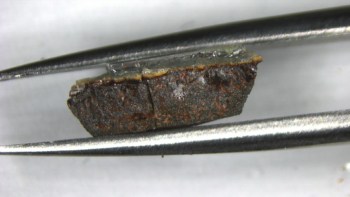
Conventional superconductivity can occur at much higher temperatures than previously expected, according to calculations made by an international team of physicists led by Matteo Calandra of the IMPMC Institute in Paris. The researchers have developed a theoretical model for the record high-temperature superconductivity reported last year in hydrogen sulphide, which the team says arises from relatively simple interactions similar to those underlying conventional low-temperature superconductors. This is different to other high-temperature materials in which the superconductivity is caused by complicated and poorly understood processes.
Low-temperature superconductors are usually well described by the BCS theory of superconductivity, whereby interactions with lattice vibrations called phonons cause electrons to pair-up to form “Cooper pairs” that can travel through the material without encountering any resistance. Such materials stop superconducting above a transition temperature (TC) fairly close to absolute zero – the highest to date being just 39 K. High-temperature superconductors, in contrast, have transition temperatures up to 133 K.
Despite the vast amount of research done on high-temperature superconductors since the first such material was discovered in 1986, much of the physics underlying their superconductivity remains unknown. This mystery appeared to deepen late last year when Mikhail Eremets and colleagues at the Max Planck Institute for Chemistry in Mainz, Germany, found that when hydrogen sulphide is subjected to extremely high pressure (200 GPa) it has a TC of 190 K. While the TC of high-temperature superconductors can be increased by applying pressure – the current record is 164 K – hydrogen sulphide looks set to become the new record-holder if the measurement can be confirmed.
Conventional yet high temperature
The strange thing about hydrogen sulphide is that – unlike other high-temperature superconductors – it does not also exist in a magnetic state, and therefore more closely resembles a conventional superconductor. This observation led Calandra and colleagues in Canada, China, France, Spain and the UK to use BCS theory as the starting point for their calculations.
Key to understanding superconductivity in hydrogen sulphide are the interactions between electrons and the vibrating hydrogen atoms. Hydrogen has a very low mass and therefore tends to vibrate at relatively high frequencies. These high-frequency modes interact very strongly with electrons and so should result in a superconductor with a very high TC. Indeed, when Calandra and colleagues used BCS theory to calculate the TC of high-pressure hydrogen sulphide, they obtained a value of about 250 K – much higher than the observed 190 K.
The team believes that the actual TC is somewhat lower, because basic BCS theory assumes that the atoms in the material vibrate as simple harmonic oscillators. However, light atoms such as hydrogen undergo more complicated anharmonic oscillations, and this can weaken significantly the interactions that create Cooper pairs. After taking anharmonic effects into consideration in their calculations, Calandra and colleagues calculate a much more realistic TC of 194 K – in close agreement with Eremets’ measurement.
Upping the pressure
The calculations also suggest that the interplay between anharmonic effects and other properties of the material will result in the TC remaining constant in the pressure range 200–250 GPa. While observing this effect in the lab would be a good test of the calculations, Calandra says he is unaware of any measurements above 200 GPa. Indeed, he points out that the 200 GPa experiment was extremely difficult to make, and that Eremets and colleagues are probably the only researchers capable of studying hydrogen sulphide at higher pressures.
“Eremet’s discovery and our theoretical work pave the way for the quest for high-TC superconductivity in hydrides and hydrogen-based materials in general,” says Calandra. “In this class of materials it should be possible to find superconductors with a TC of the same order (or maybe more) than hydrogen sulphide at high pressure,” he adds.
Elisabeth Nicol of the University of Guelph in Canada is enthusiastic about the results. “What is amazing is that this says we can actually have an electron–phonon superconductor that operates at 190 K,” she says. Nicol, who was not involved in the calculations, adds that “While technically the theory of superconductivity itself does not put a limit on TC, consensus has been that electron–phonon superconductors have low TC. Clearly, we are learning that there are still possibilities out there for conventional superconductivity.”
The work is published in Physical Review Letters.



